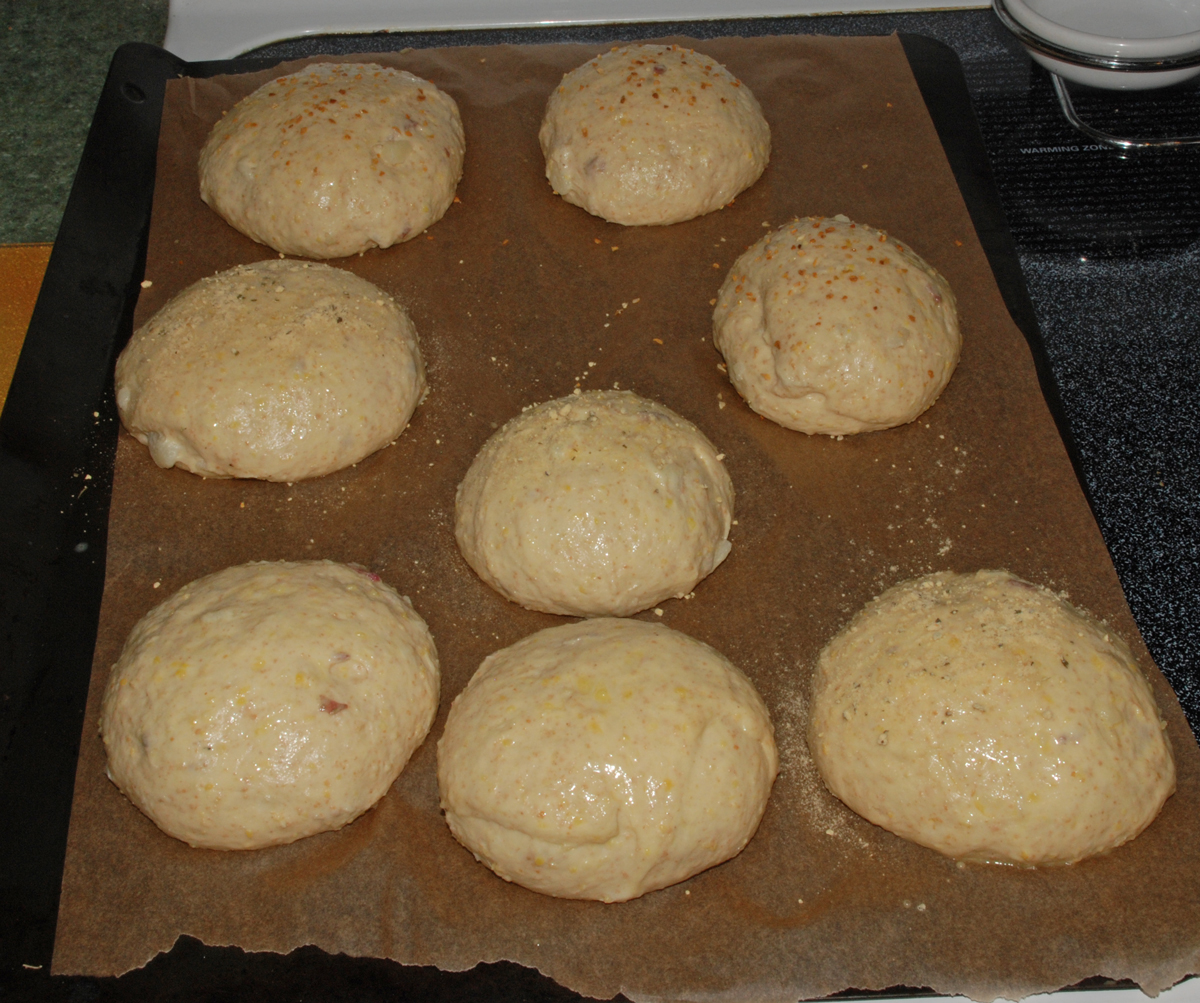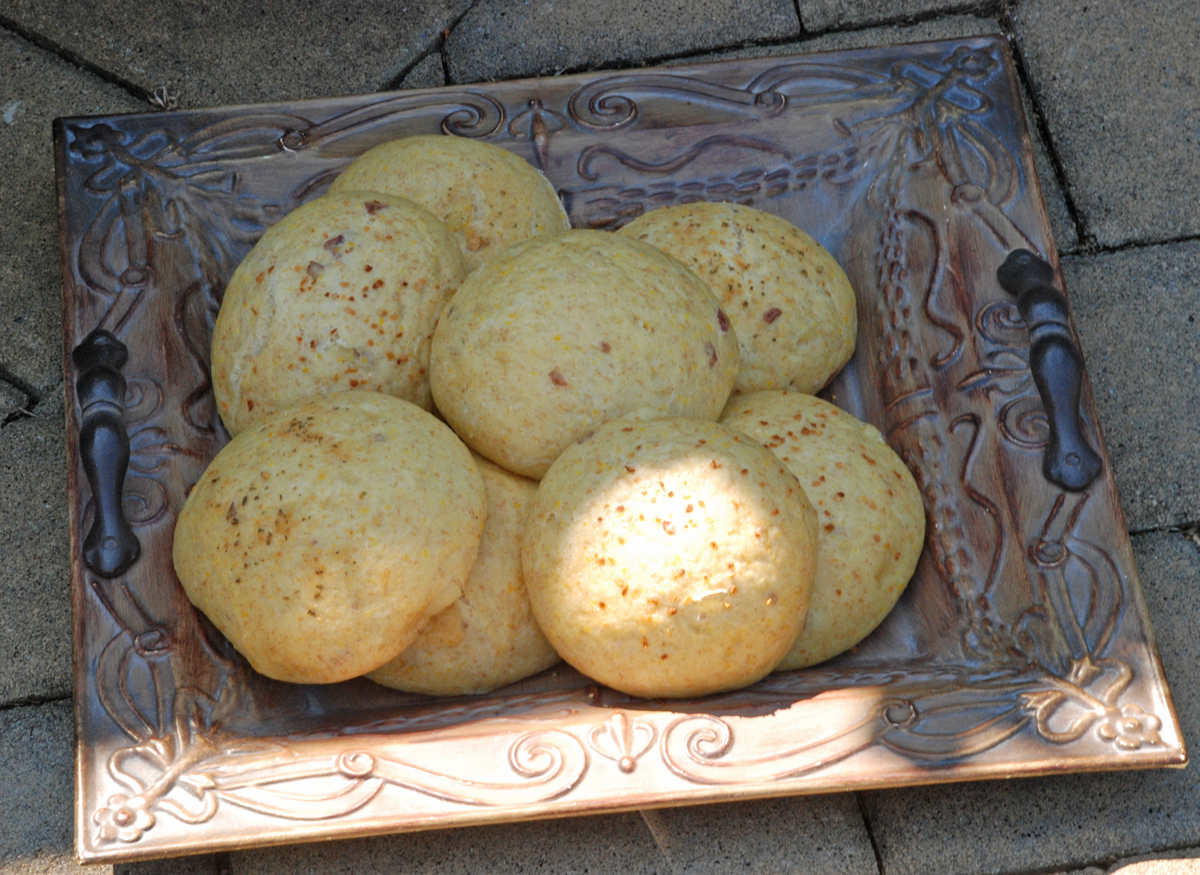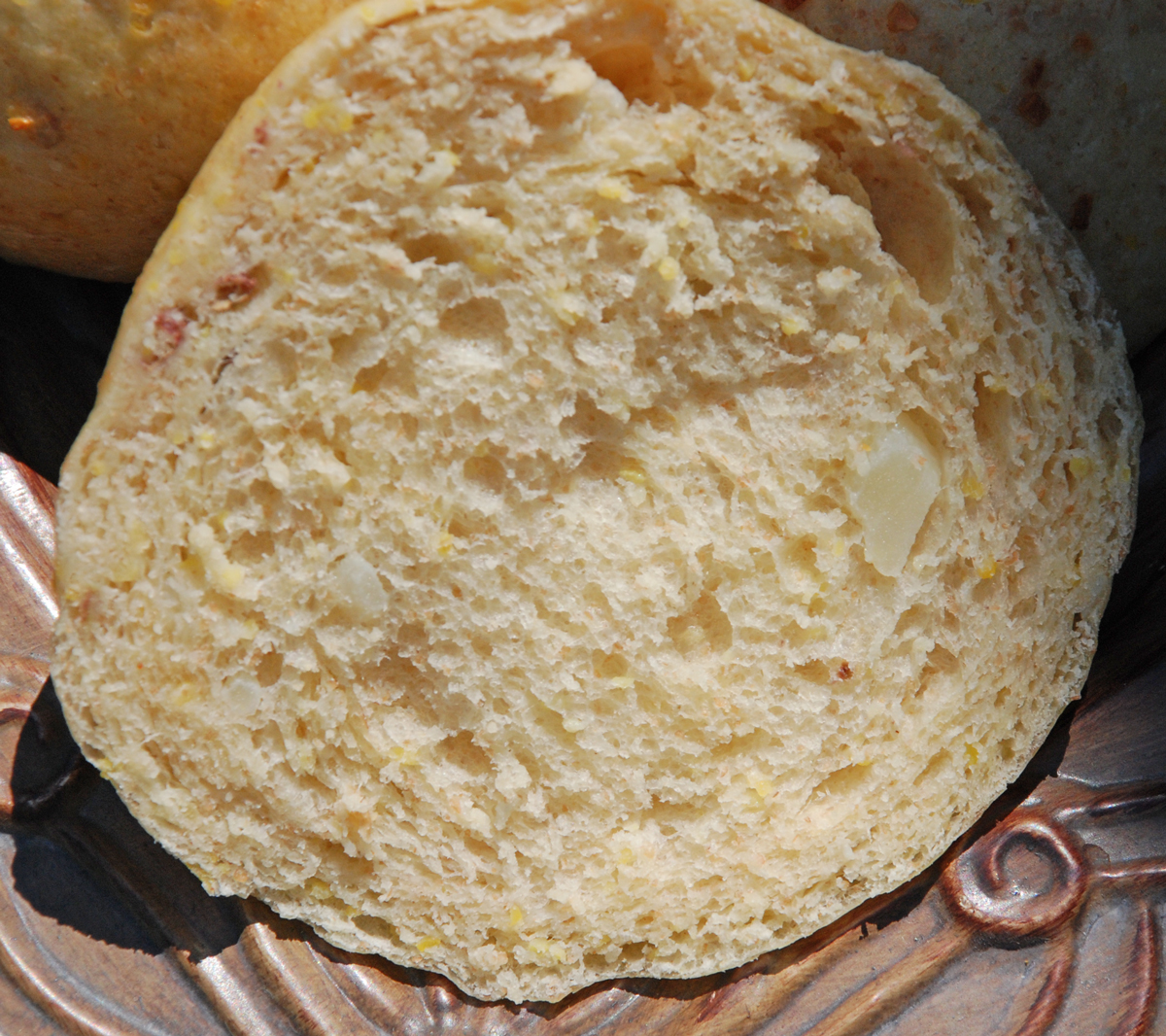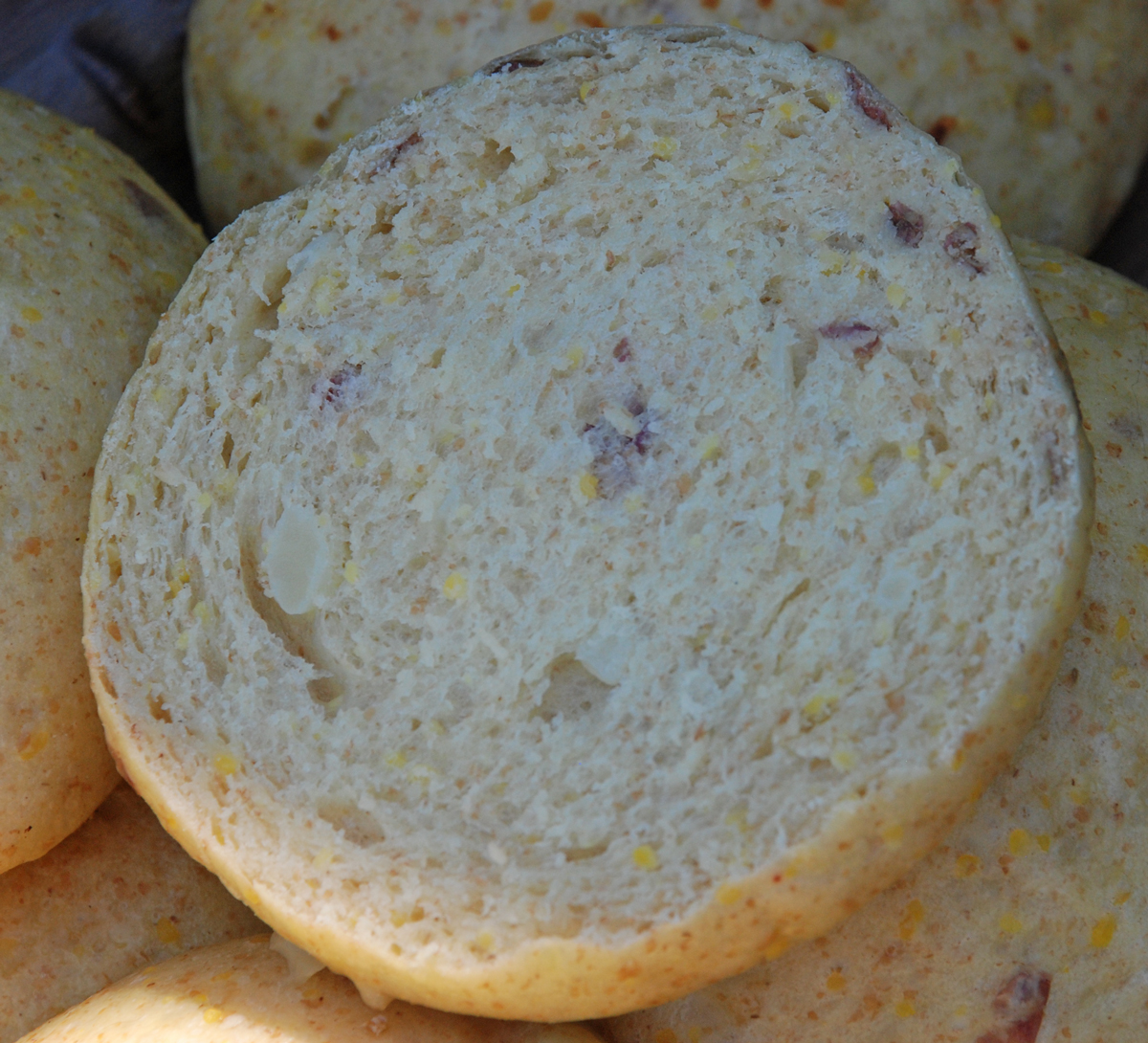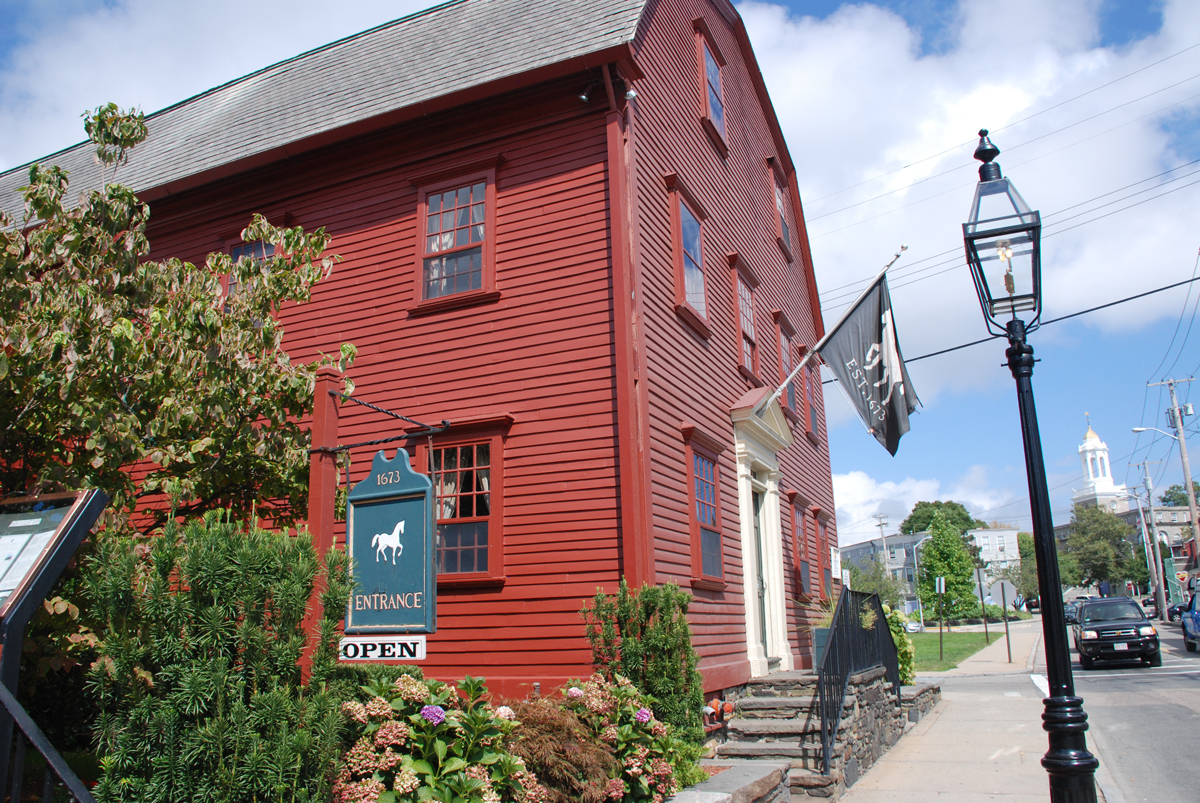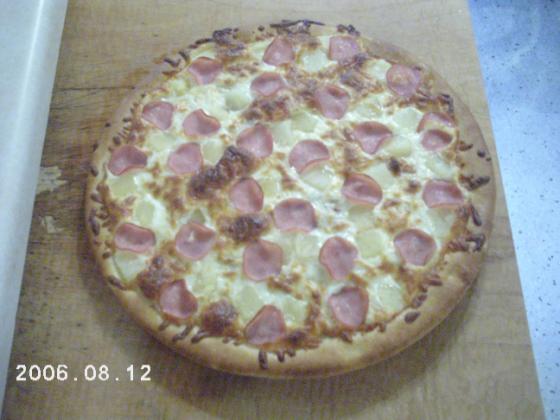
I've made similar bread with cheese and potatoes before, but this time I added some Durum Semolina flour to the starter and I smoked a sweet Vidalia onion and some baby red potatoes as well.
I like to work with fairly high hydration doughs and this was no exception coming in at 75% hydration.
The resulting bread was an irresistible bread good enough to eat by itself. I believe the corresponding photos speak for themselves. If you like a nice moist bread oozing with a slightly spicy cheese and smoked onions then I highly recommend you give this one a try!
Starter
142 gms Bread Flour (KAF)
85 gms Durum Semolina (KAF)
71 gms Seed Starter (65% White Starter recently refreshed)
151.5 gms Water (90 degrees F.)

Final Dough Ingredients
425 gms Starter from above (Should be all of the starter)
113 gms Whole Wheat (I use King Arthur Flour)
226 gms Bread Flour from KAF
58 gms Organic Cracked Wheat
152 gms roasted or barbecued Potatoes (I smashed them up and left the skin on for some added flavor)
80 gms Chipolte Cheddar Cheese (I cut the cheese into small cubes)
80 gms Smoked Sweet Style Onions (I smoked them on my barbecue, but feel free to roast them with some olive oil in a pan or your oven)
425 gms Luke warm water, 90 degrees Fahrenheit
18 gms Sea Salt
Directions
The night before, mix the starter ingredients together in a small bowl and let sit loosely covered for 9-10 hours at room temperature. The starter should be nice and bubbly and should have at least doubled in volume. Cover and place in refrigerator until ready to use for up to 2 days or use right away.
When ready for the main event, take the starter out of the refrigerator and let it rest for an hour to come up to room temperature. In the bowl of your mixer break the starter up into 6-10 pieces and add the water. Mix on low for a minute or less to break up the starter. You may want to use your hand to make sure it is nice and foamy. Next add the cracked wheat and then all of the flours. Mix on low for 2 minutes and then let the dough rest for 15 to 25 minutes covered.
After the autolyse add the potatoes and salt mix on speed number 2 for 3 minutes. Now add the onions which should be chopped up into small pieces and mix for 1 minute more until they are incorporated into the dough.
Remove dough to your lightly floured work surface and do about 10 stretch and folds with a dough scraper or your hands but keep them oiled or wet. Form the dough into a ball and let it rest uncovered for 10 minutes.
Do a stretch and fold and form into a ball again and cover with a clean moist cloth or oiled plastic wrap. Let it rest for another 10 - 15 minutes and then do another stretch and fold. The dough should start to develop some gluten at this point. Let it rest covered again.
Now flatten the dough out into a rough rectangle and add the cheese and form the dough into a ball. Cover the dough ball again and let it rest. After another 10 minutes do another stretch and fold and put into a lightly oiled bowl that has enough room so the dough can double overnight.
Let the dough sit at room temperature for 2 hours and then put in your refrigerator for at least 12 hours or up to 3 days.
When ready to bake the bread, take it out of the refrigerator and let it sit at room temperature for 2 hours. Now shape the dough as desired on a floured work surface being careful not to handle the dough too roughly so you don't de-gas it.
Place it in your bowl, banneton or shape into baguettes
.
Let it sit at room temperature for 2 hours covered with oiled plastic wrap or a wet cloth.
Pre-heat oven with baking stone (I use one on bottom and one on top shelf of my oven), to 500 degrees F.
Slash loaves as desired and place empty pan in bottom shelf of oven.
Pour 1 cup of boiling water into pan and place loaves into oven.
Lower oven to 450 Degrees and bake for 25 - 35 minutes until bread is golden brown and internal temperature reaches 200 degrees. Leave the loaves in your oven with the door cracked for 5 minutes longer with the oven off. After 5

minutes remove them from the oven and place on your cooling rack. Try to resist the temptation to cut into the bread until they have cooled sufficiently.












